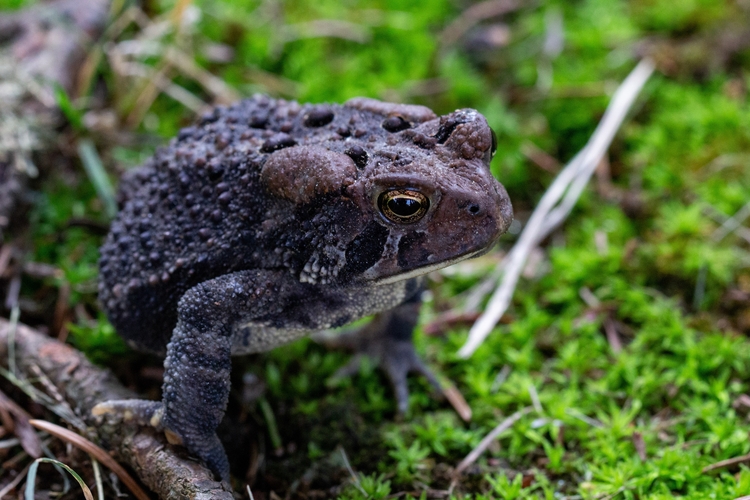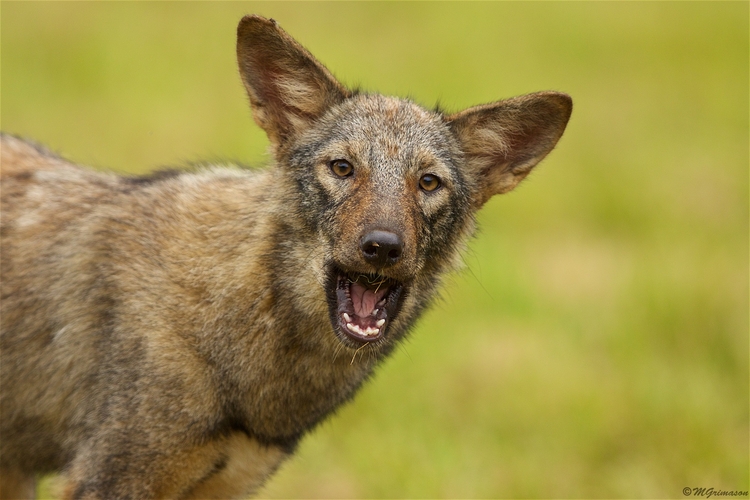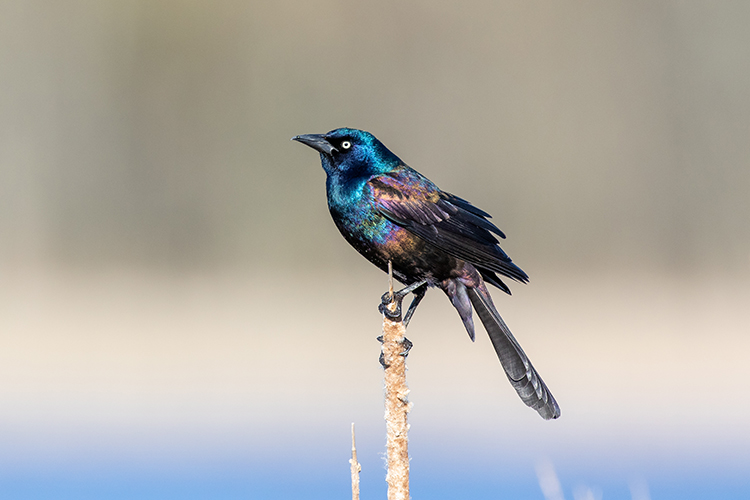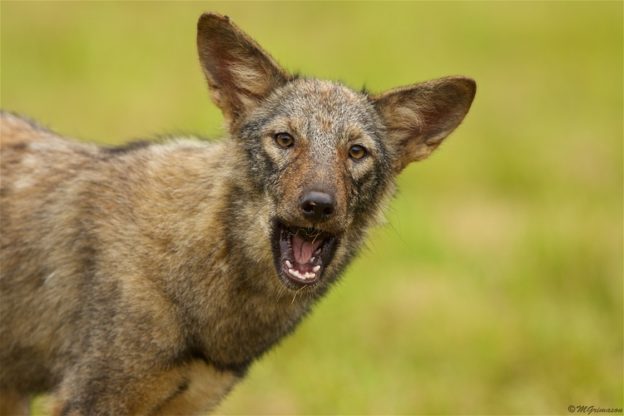During this time of year, a chorus of unusual sounds echo throughout forests, wetlands, and grasslands. Different animals break the silence of the warm summer air, some recognizable like the hum of a cricket or the call of a mourning dove, but others may be harder to identify. Learn three different noises you may hear during the summer.
American Toad
Unlike the deep vibrato of the American Bullfrog, American Toads have more of a smooth trilling call, like a telephone. While they call, their vocal sac swells into a bubble under their chin, and the musical sound can last anywhere from 4-20 seconds.

American Toads are a member of the true toad family Bufonidae. They can be found on forest floors across the state, except on Nantucket. Their brown bodies are covered with warts and mixed with black coloration and a white belly.
Coyote
You may hear a cluster of coyotes howling during the night, but that doesn’t mean the area is filled with these canines. In fact, most howls come from a few adults trying to locate each other, warning outsiders to stay off their territory, or pups practicing how to howl with their parents. Contrary to popular belief, they do not call out to announce a kill, since that would attract other scavengers to pick away at their meal.

Coyotes are adaptive creatures that live in a variety of habitats, including cities. If you hear their late-night howls, remember that as scary and ominous as they sound, coyotes rarely attack humans and prefer to keep their distance.
Common Grackle
Sitting on a suburban or rural lawn, a Common Grackle utters a short and sharp chak note. From a distance, their bodies appear to be all black, but up close you can see their blue head, iridescent body, and golden eyes. They are the largest of the blackbird family in Massachusetts, reaching a foot in length from bill to tail.

Grackles are social birds and outside of breeding season, can be seen in large flocks. They keep up their chattering no matter where they are, from resting on a telephone line to pecking in agricultural fields.
Stop and Listen
Don’t forget to take a moment and listen to all of nature’s songs this summer. To learn more about different creatures living in Massachusetts, sign up for a program at one of Mass Audubon’s wildlife sanctuaries.


